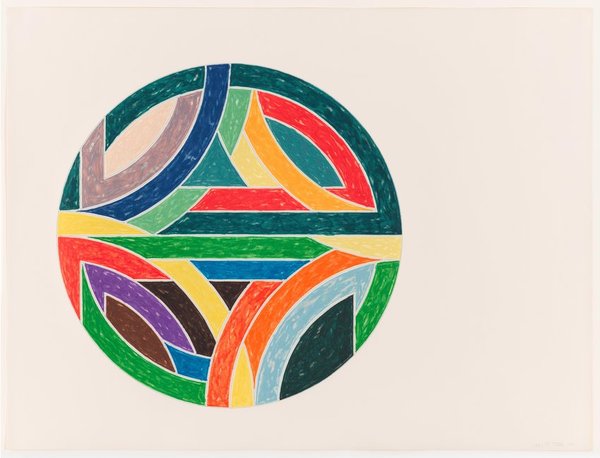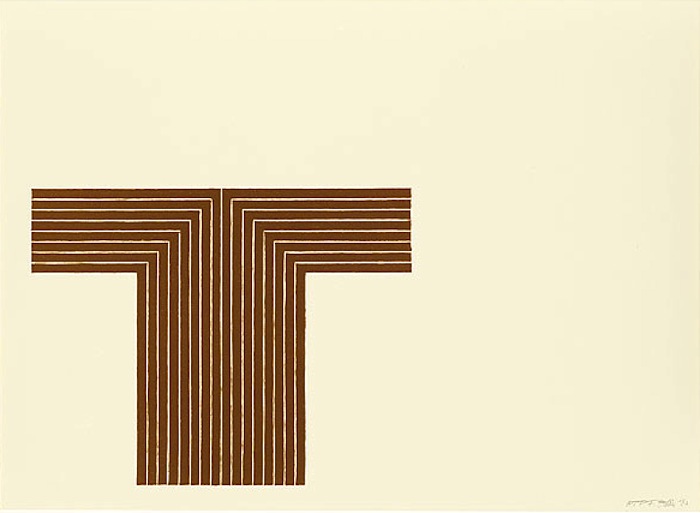
Frank Stella
Jasper’s Dilemma, from Jasper’s Dilemma
1973
Offset Lithograph
16 x 22 in.
Edition of 100
Pencil signed and numbered
About the work:
Frank Stella defiantly departed from Abstract Expressionism through a complete restructuring of the idea of painting. He revolutionized the field and inspired changes still felt today.
This week’s Work of the Week! WOW! is Stella’s Jasper’s Dilemma, an homage to fellow artist Jasper Johns who he admired greatly.
Jasper’s Dilemma is formed of two “mitered” mazes as Stella called them. Mitered joints are joints that are beveled, usually at a 45 degree angle to form a corner, such as standard picture frame edges. Both mazes seem identical in structure, divided into 4 triangles whose points don’t quite meet at the center, however, the colored maze spirals outward in a counter-clockwise path from the center and the black, while the black and white maze follows a clockwise route.
Stella eliminated subjectivity in his work through using arbitrary mathematical measurements, forcing the viewer to think about the relationship between color and form. Johns on the other hand, created compositions of recognizable items, closing the gap between the object and its representation, transforming an object into art.
Johns would often create a work in color, then reexamine it in shades of grey. This “dilemma” is posed in Stella’s tributary work (which holds both the representation in color and in grey), between the “seduction of the spectrum against the rigors of the grey scale.” The title of this work and its color scheme make explicit reference to Johns’s statement that the more he worked in color, the more he saw gray.
For Johns, the use of grey was a means to think about color through its absence. Johns initially used grey tones as a statement of skepticism or anticipation, but it evolved into a profound examination of the meaning of color itself. Grey was the most appropriate hue with which to present “conceptual” art since it is less stimulating, allowing for more space for ideas.
In removing color, the artists refocus the viewer’s attention to consider the means of representation, over what is represented and, to consider how does something come to have meaning, rather than what does it mean.








